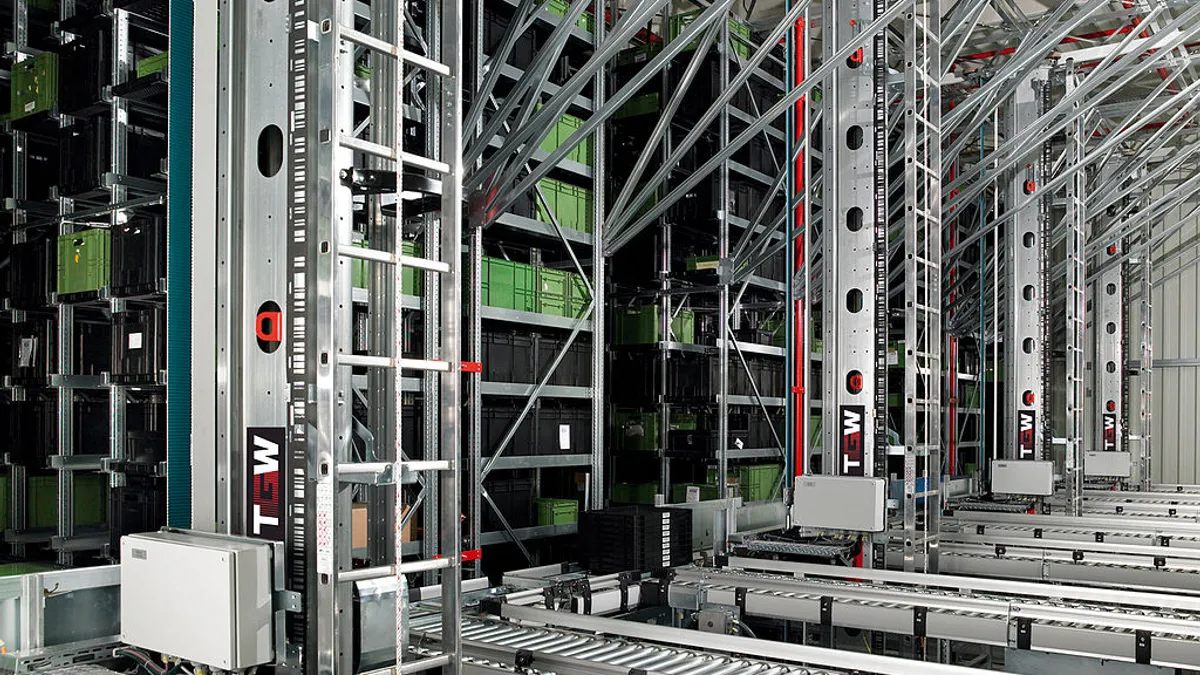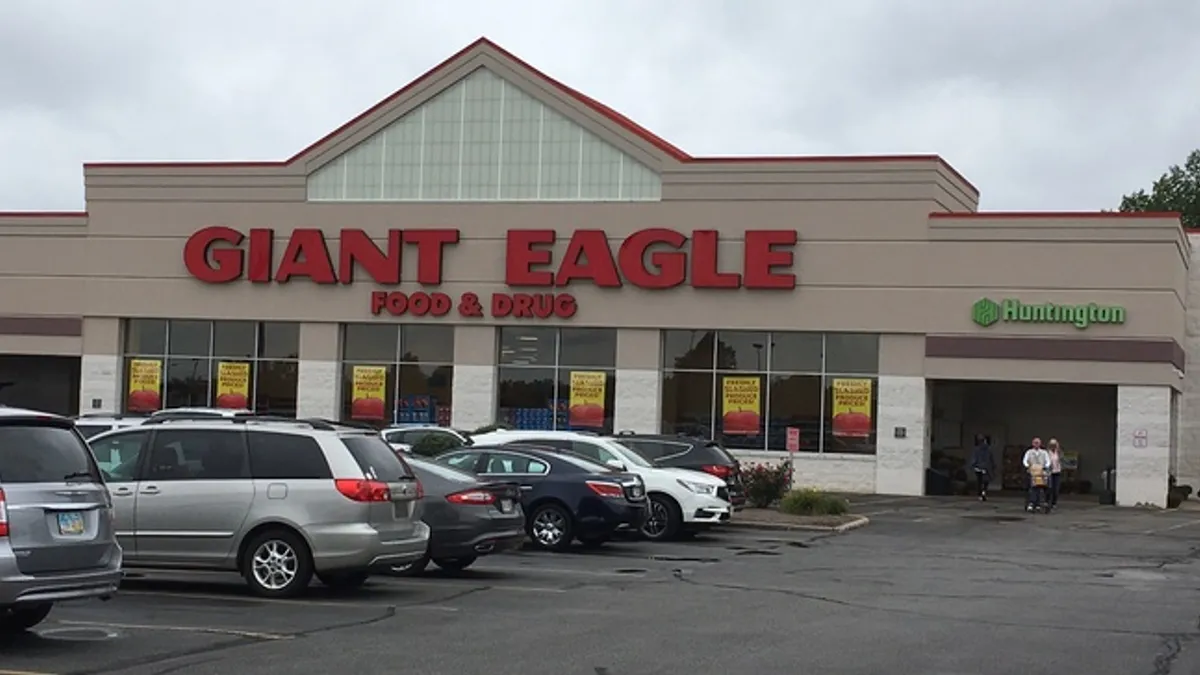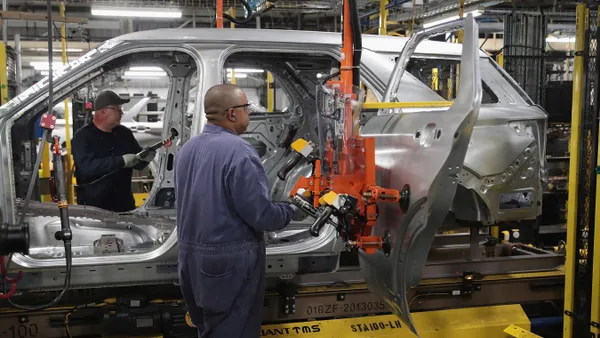At a time when warehouse managers are expected to move more product at a faster pace and at a lower cost, efficiency is key. Updating decades-old material handling equipment may seem like a way to boost operations, but experts say there are many things warehouse operators may be able to do to make better use of their existing machinery.
Implementing a modern warehouse management system (WMS) is the first step to opening a new door for data to drive new efficiencies. Internet of Things (IoT) devices and sensors can also offer new visibility into how to improve processes and configurations, and enabling predictive maintenance to help machinery to perform better. Finally, conveyor systems can be upgraded from tubes to slat-carrying surfaces to better accommodate the growth of e-commerce and new packaging.
New equipment is not always the first step
While warehouse machinery has improved dramatically in recent years, new machines and equipment shouldn't be the first place to look for increasing efficiency and performance.
Warehouse operators can attain many productivity gains without major capital expenditures by optimizing the use of what they have. They must identify the main challenges with their own equipment to determine if it’s fulfilling the needs of the operation and capable of handling today’s widely used packaging types, said Tim Kraus, director of product management at Honeywell Intelligrated.
For example, many of today’s e-commerce operations ship direct-to-consumer orders in malleable polybags. While the packaging can minimize shipping costs, older machinery that was designed for rigid corrugated cases can have trouble accommodating it. But it doesn't necessarily call for a new machine.
"Upgrading to a sliding shoe sorter from tubes to aluminum slats may help accommodate a wider variety of SKUs with better performance," Kraus told Supply Chain Dive.
Repurposing existing technology, changing processes or reconfiguring material handling systems can also enable existing distribution centers to accommodate SKU growth, increases in store count or changes in the order profile. "Efficiency improvements also make companies nimbler, giving them the flexibility they need to rapidly adapt to ongoing market and business changes," said John Naylor, account manager at Honeywell Integrated, in a white paper.
While it’s a common strategy to throw additional labor at problems, warehouse operators with legacy equipment can find much room for improvement by analyzing sorter speed, picking placement, loading doors and how all the equipment works together. From integrating two-stage cross docking, to making picking processes more efficient or reducing the gap between cartons on sorting equipment, strategies abound to improve productivity without adding cost.
"In many cases, a 40 percent increase in throughput can eliminate an entire shift of operations," Naylor said.
Upgrade software to make existing equipment more efficient
Before looking to new equipment or upgrades, operators should also invest in a modern warehouse management system. It can serve as a baseline to implement new technologies and efficiencies, said Adam Robinson, marketing manager at Cerasis.
According to a survey by the Warehousing Education and Research Council (WERC), roughly one-third of warehouse facilities are operating without one.
As the growth of omnichannel retail raises the demand for things like rapid fulfillment and reverse logistics, it is difficult for any warehouse to optimize their operations without the WMS to support it. A WMS can help make better use of things such as forklifts through better management and software, and it can offer new visibility in how to improve processes and layout.
"It’s going to be difficult to adapt to many of these changes. Your people are going to be slower. A good modern WMS can be the difference between something that takes two seconds and something that takes four minutes," Robinson told Supply Chain Dive.
Implementing RFID tagging and tracking can also yield new efficiencies without having to replace large equipment. Prices have come down in recent years, and the improved visibility of products moving through the warehouse enables them to make conveyor belts more efficient in how they support picking, packing and storing.
"Having better visibility of where your warehouse operations are going can help you get the most out of that old conveyor belt. Are you maximizing its space? Are you maximizing its feed? Are human beings engaging with it?" said Robinson.
Predictive maintenance and machinery upgrades
Instead of full replacement, some machinery can also be upgraded or outfitted with new components to better accommodate modern operations.
In one example, Honeywell helped discount retailer Fred’s rebuild a 1998 sliding shoe sortation system. Total replacement would not only be costly but would also require two months of downtime. So instead, Honeywell performed an audit, identified the weak points of the sorter with a full analysis and offered a customized solution based on specific requirements.
Mechanically rebuilding the sorter and moving from a tube to a slat carrying surface offered "night and day" improvement, said Reggie Jacobs, executive vice president of distribution, transportation and corporate service at Fred’s. "The retrofitted sortation system enabled an interrupted production process in our peak season with less congestion and without the interference from repair and maintenance downtime," Jacobs told Supply Chain Dive.
Another area in which warehouse managers can leverage technology to modernize their machinery is through predictive maintenance.
Everything from old motors and HVAC units to forklifts can now be retrofitted with sensors that better monitor performance, usage and determine the best maintenance schedules. Moving beyond traditional break-fix models can enable the warehouse to reduce downtime and get more out of their equipment.
"You might be able to predictively understand when it might fail and make sure your scheduled maintenance is taken care of. With sensors and a larger approach to asset maintenance, you can make better decisions and have smarter capital planning about equipment," said Robinson.





















